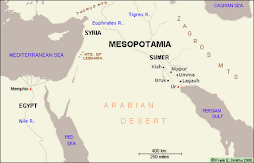Renaissance- the profound social and cultural changes of the 15th and 16th centuries are known the Renaissance.
Humanism- One of the most important features of the Renaissance was the growth of humanism. This was a cultural and intellectual movement which developed in the 15th century and the early 16th century.
Erasmus of Rotterdam- Was an important humanist.
Thomas More- was an important humanist
Juan Luis Vives-was an important humanist.
Johannes Gutenberg- invented the priting press, in 1440.
Printing press-it was a revolutionary invention because:
-Books no longer had to be copied by hand
-Books became cheaper, and so more were sold.
-Humanist thought reached more people.
Nicolaus Copernicus- developed the heliocentric theory.
Heliocentric theory- This maintained that the Sun was the centre of the universe, and that the Earth and other planets revolved around it.
Ptolemaic- developed the geocentric theory.
Geocentric theory- which maintained that the Earth was the centre of the universe.
Quattrocento- was the term applied to 15th century Italian art, which flourished in Florence.
The Cinguecento was the term used to describe 16th century art, which flourished in Rome.
Proportions- Buildings were smaller, and not as tall as Gothic constructions. This was because architects wanted to adapt them to the proportions of the human body.
Leon Battista Alberti- Another importat architect was Leon Battista Alberti. He built the Rucellai Palace in Florence and the Basilica of Sant'Andrea in Mantua.
Bramante-built the Saint Peter's Basilica, did the first project.
Michelangelo- built the Sait Peter's Basilica, changed the dome.
Maderno- built the Saint Peter's Basilica, completed the rest.
Perspective-The renaissance painters used colour, composition and background scenes, such as buildings and landscapes, to create an impression of space and depth. They discovered perspective.
Masaccio- Was a Florentine painter.
Leonardo da Vinci, who brilliantly represented nature. He was a master of sfumato, a technique which involved blurring outlines to create a sense of depth.
Raphael achieved perfection in his use of colour, drawing and composition.
Titian- was a Venetian painter created highly colourful works of art. He is famous for his portraits, and paintings of religious and mythological themes.
Donatello- The greatest sculptor of the Quattrocento was Donatello. He captured the Renaissance ideal of sculpture in works like David.
Albrecht Dürer- was a great Renaissance figure. He introduced the Renaissance style in Germany after he had visited Italy. Dürer was an excellent draughtsman, engraver and portrait painter.
The Herrerian style- was characterised by austerity and solemnity.
The Plateresque style- was characterised by its abundant and delicate ornamentation.
El Greco- religous paintings and portraits had an original, dramatic style, which was full of movement.
Martin Luther- wrote 95 Theses in which he strongly criticised the Pope.
Lutheranism- was incompatible with the ideas of the Catholic Church.
Protestants- Consequently, Lutherans, later called Protestants, left the Catholic Church.
Calvinism-founded by John Calvin. His doctrine was based on predestination.
Predestination- The people are condemned or saved before they are born.
Henry VIII- wanted to divorce his wife, Catherine of Aragón, to marry another woman. However, the Pope would not grant him a divorce.
Anglican Church-In 1534, Henry VIII decided to create his own church, the Anglican Church. The king would be head of the church instead of the Pope. In many other ways, Anglicanism was initially very similar to Catholicism.
Council of Trent- met and adopted different resolutions.
Society of Jesus, founded by Saint Ignatius of Loyola in 1540, supported the Pope during the counter-reformation.
Inquisition- Persecuted those who failed to follow Catholic dogma.
Suscribirse a:
Enviar comentarios (Atom)






0 Response to "vocabulary unit 9"
Publicar un comentario